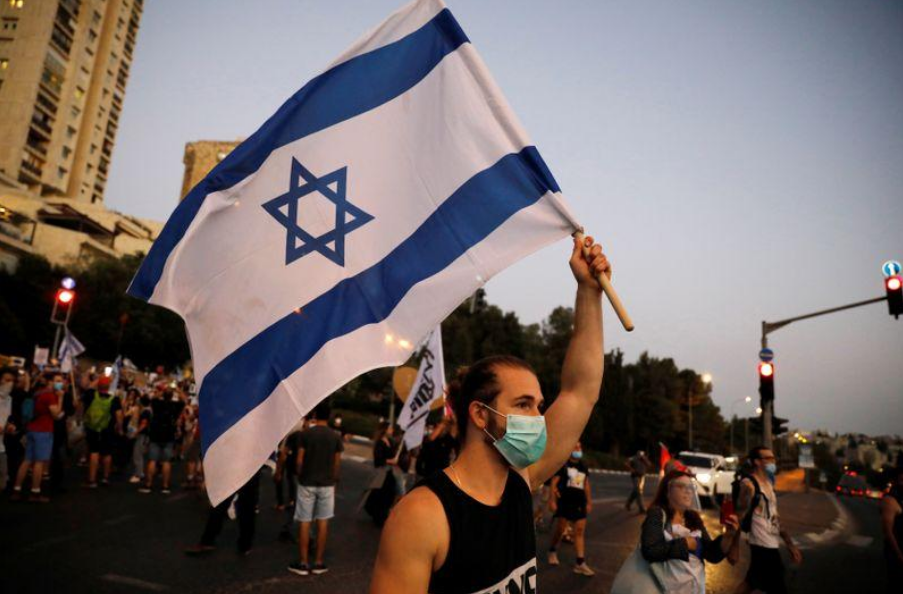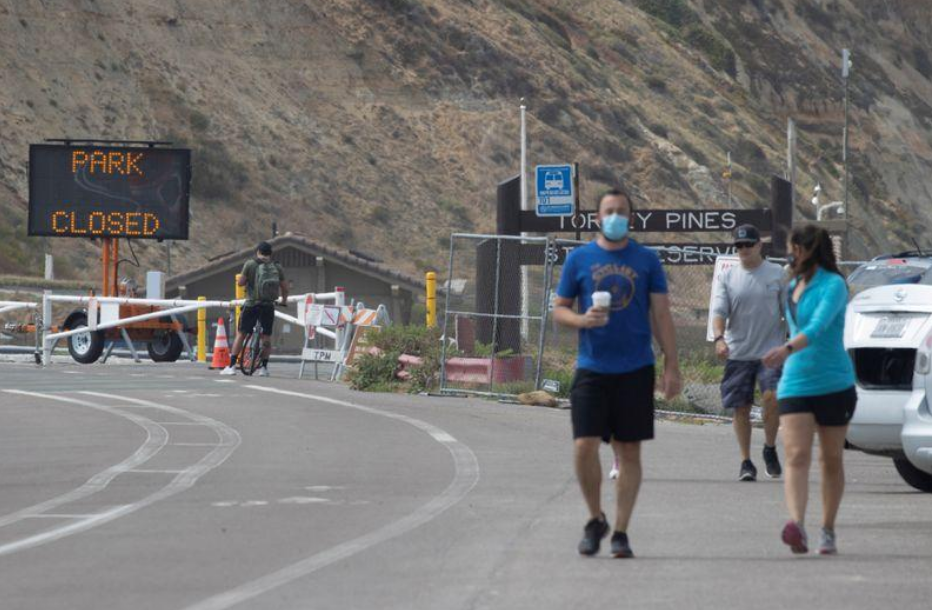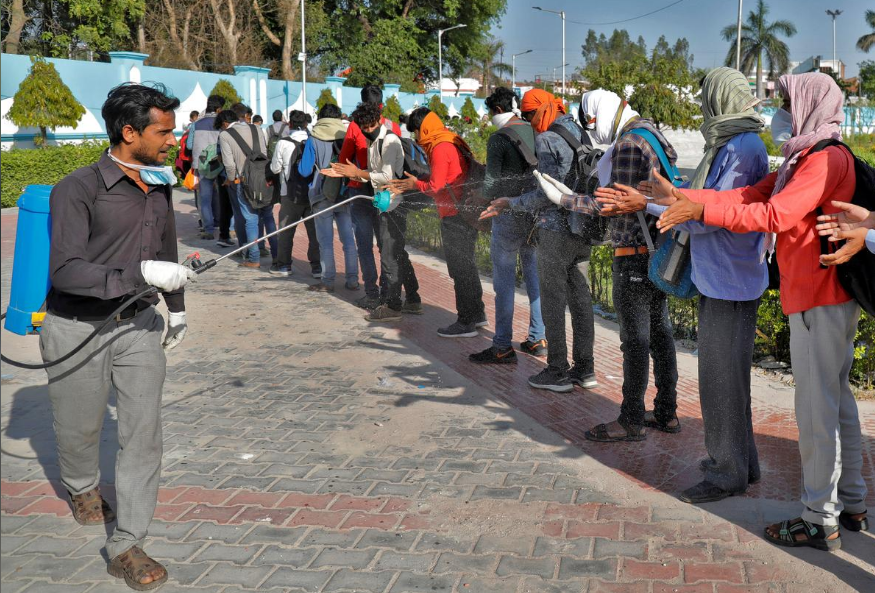Editor's note: This is the 94th article in the COVID-19 Global Roundup series. Here is the previous one.
On Thursday, Israel convened its special coronavirus advisory committee to discuss the probability of reimplementing a full lockdown after daily COVID-19 cases surged to a new high.
Despite having had contained the spread of the virus earlier, the country recently saw an immense coronavirus resurgence, with the daily case count peaking at nearly 2,000 and remaining unabated for several weeks.
As countries around the world have largely entered the post-lockdown phase, a wide range of public venues have been re-opened and people have been partaking in all kinds of activities. But in some places the cheerful ambiance was soon dimmed by an aggressive coronavirus return, propelling governments to rethink their COVID-19 strategies.
What's happening in Israel is a prime example of societal reopening going south. In early May, the country began to take steps to lift a months-long lockdown after it saw confirmed cases in steady decline and the number of daily new diagnoses limited to single digits, but the subsequently revitalized society was then followed by a full-blown outbreak that has proven to be even worse than before.
Hospital beds have become filled and government officials have grown increasingly wary of an aggravating situation. Prime Minister Benjamin Netanyahu who was praised for his swift response at the early stage of the pandemic is now under heavy fire due to the massive coronavirus rebound as well as a lockdown-triggered economic crisis.

Israelis march as they protest against Israeli Prime Minister Benjamin Netanyahu and his government's response to the financial fallout of the coronavirus disease (COVID-19) crisis, in Jerusalem, July 21, 2020. /Reuters
Israelis march as they protest against Israeli Prime Minister Benjamin Netanyahu and his government's response to the financial fallout of the coronavirus disease (COVID-19) crisis, in Jerusalem, July 21, 2020. /Reuters
On Thursday, the health ministry said it found more than 300 patients in a critical condition, the country's first since the outbreak, while predicting that there will be at least 250 new cases with severe symptoms next week.
This dark turn of events prompted researchers to find the roots of the problem, and the findings were revealing. They indicated that the bulk of new infections came predominantly from a single category of activity – public gatherings, particularly weddings. Meanwhile, two government missteps stood out: The failure to put together a national network of testing labs and technicians able to track the virus, and the reluctance to appoint an expert as the chief coronavirus coordinator, a problem that was now realized and a top doctor was recently named to the post.
Last week, a partial lockdown was first reintroduced after Israel allowed a return to normalcy. Indoor gatherings of 10 or more people have been banned and shops, hairdressers and attractions have been ordered to close. While the reimposition of these measures is met with strong resistance from both the public and the Knesset, Israel's parliament, the health ministry is pushing for a total lockdown to prevent the outbreak from getting worse. It is not yet certain whether the country will again be closed in its entirety.
Israel is not alone in having had to reconsider a total lockdown. The United States, India, Australia and others followed pretty much the same pattern, which began from an economic reopening to having witnessed the re-emergence of a worsening outbreak.
In the United States, where the rush to relax restrictions began in May, is now on the verge of lockdown 2.0 as mass infections have been detected and some places are witnessing situations that are similar to what was occurred in April's New York, the former epicenter of the country.
The conventional theory for the country's reopening fiasco is that the federal government pushed the responsibility for safe reopenings on to states by issuing non-binding guidelines that essentially left states' fates to governors. It had also been insistent in encouraging states to restore American society so that the economy can be revitalized.
Instead of sincerely committing itself to clearing away the obstacles that make safe reopenings difficult, Washington chose to deflect responsibility while indulging in the idea that governors can sort things out themselves as long as sporadic federal assistance was provided.

Torrey Pines State Park is shown closed for the July 4 long weekend during the COVID-19 outbreak in San Diego, California, the U.S., July 2, 2020. /Reuters
Torrey Pines State Park is shown closed for the July 4 long weekend during the COVID-19 outbreak in San Diego, California, the U.S., July 2, 2020. /Reuters
But the following developments seem to have shattered the White House's wishful thinking.
With the absence of a responsible national authority, the majority of states went on to lift restrictions without meeting even the minimum criteria of the White House guideline, which was already considered by experts as insufficient for safe reopenings. An aggressive return of the virus then followed, causing not only a reversed trend of case counts but also a full economic downturn. As of now, the country is losing about 5,000 people to the virus every week.
In California, Arizona, Nevada, Colorado, New Mexico, Texas, Louisiana, Florida and Michigan, different types of restrictions have been put back.
For India, the case is slightly different. Unlike the others, the number of new daily cases in the country has never seen a downward trend ever since the outbreak emerged. The high population density, especially in some of the largest cities, had made it extremely difficult for the spread of the virus to be slowed even when the government had some of the strictest measures in place. As the previously imposed nationwide lockdown also decimated the jobs that the majority of people needed to sustain their lives, the government had no choice but to lift its nationwide lockdown in June.
Last week, India's coronavirus case count surpassed seven figures and it is still skyrocketing, with more than 30,000 new infections being reported on a daily basis. There is also a total of 30,601 COVID-19 patients who have succumbed to the disease. While the country's reopening was not due to an improved situation but rather seemed to be an inevitable decision that had to be made, the country now feels compelled to reimpose lockdowns to prevent the total collapse of its health system. But this time, lockdowns are largely limited to region-wide and in some cases only imposed on carved-up zones of a city.

A municipal worker sprays disinfectant on migrant workers before they board a bus to return to their villages, during a 21-day nationwide lockdown to slow the spread of the new type of coronavirus in Lucknow, India, March 30, 2020. /Reuters
A municipal worker sprays disinfectant on migrant workers before they board a bus to return to their villages, during a 21-day nationwide lockdown to slow the spread of the new type of coronavirus in Lucknow, India, March 30, 2020. /Reuters
Uttar Pradesh, India's most populus state, has implemented curfews on weekends. Bihar, an eastern state with a population of 128 million and a fragile health system, last week entered a two-week lockdown. In Bangalore, a city that prides itself as the center of of Indian technology innovation, the government also ordered a lockdown last week but it has now ended, with other smaller-scale restrictions still in place.
At the beginning of July, Australia also reimposed a lockdown in its second-biggest city Melbourne. This came after the city saw daily cases begin to consistently soar. Much like Israel, Australia had been very successful in managing the pandemic, and while the daily case count only stands at hundreds, this new wave of infections have proven to be tenacious. Many said the surge of infections was primarily because residents' guards were lowered and a sense of complacency had prevailed, leading to many large gatherings and especially parties that created right conditions for the spread of the virus.
From the day the city reentered lockdown till now, there is a significant difference in the average caseload. On Thursday, it recorded 410 new cases, about 250 more than the average number two weeks ago. Given the unabated trend of daily diagnoses, predictions indicate that the lockdown in Melbourne may last until Christmas.